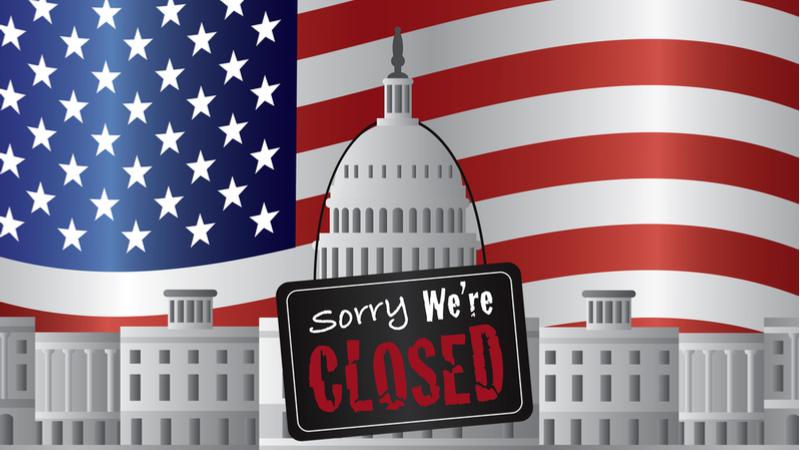
With the government on the brink of a shutdown as Congress remains at an impasse on funding beyond this weekend, the Office of Management and Budget (OMB) formally initiated the process of preparing for a potential shutdown on Friday, Sept. 22.
The agency participated in the mandatory but standard process of releasing shutdown guidance to agencies ahead of the Sept. 30 funding deadline, an OMB official confirmed to MeriTalk today.

The standard procedure was circulated to agencies on Sept. 22 and lays out the steps toward bringing non-essential government functions to a halt.
Every department and agency has its own set of plans and procedures.
The OMB guidance includes information on how many employees would get furloughed; which employees are essential and would work without pay – for example, air traffic controllers, Secret Service agents and U.S. Centers for Disease Control and Prevention laboratory staff; how long it would take to wind down operations in the hours before a shutdown; and which activities would come to a halt. Those plans can vary from shutdown to shutdown.
“One week prior to the expiration of appropriations bills, regardless of whether the enactment of appropriations appears imminent, OMB will communicate with agency senior officials to remind agencies of their responsibilities to review and update orderly shutdown plans, and will share a draft communication template to notify employees of the status of appropriations,” reads a budget circular document from OMB.
The document calls on agencies to reevaluate their shutdown plans, and if appropriate, revise and submit the new plan to OMB for review in advance of implementing the plan.
How Would a Shutdown Effect Feds, American Public?
Government services would be disrupted and hundreds of thousands of Federal workers furloughed without pay if Congress fails to provide funding for the fiscal year starting Oct. 1. Workers deemed “essential” would remain on the job, but without pay.
For example, scientific research would be disrupted as agencies like the National Institutes of Health, the National Science Foundation and the National Oceanographic and Atmospheric Administration would furlough most of their workers, according to recent contingency plans.
NASA would continue to support the International Space Station and track satellites, but 17,000 of its 18,300 employees would be furloughed.
Weather forecasts and fisheries regulation would continue, as would patent and trademark reviews. Tests of new drugs and medical devices would continue.
The two million U.S. military personnel would remain at their posts, but roughly half of the Pentagon’s 800,000 civilian employees would be furloughed.
Contracts awarded before the shutdown would continue, and the Pentagon could place new orders for supplies or services needed to protect national security. Other new contracts, including renewals or extensions, would not be awarded. Payments to defense contractors could be delayed.
Airport security screeners and air-traffic control workers would be required to work, according to recent contingency plans, though absenteeism could be a problem. Some airports had to suspend operations during a shutdown in 2019 when traffic controllers called in sick.
Federal employees, whether they remain on the job or are furloughed, won’t get paid while the government is shut down. However, they will receive back pay once funding is restored to their agency. In prior shutdowns, Congress had to approve back pay for employees, but a 2019 law made it mandatory. Contractors, however, are not guaranteed back pay.
Each agency determines in their contingency plans what positions are considered essential and what are not. OMB has directed agencies to notify employees no later than two business days before a lapse in funding about their work and pay status.
This week is not the first time the government has been on the brink of a shutdown. The government shut down for 35 days – a record length – from December 2018 to January 2019 amid a congressional stalemate over funding for then-President Donald Trump’s southern border wall.
